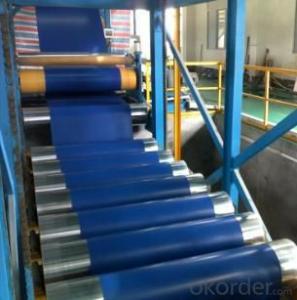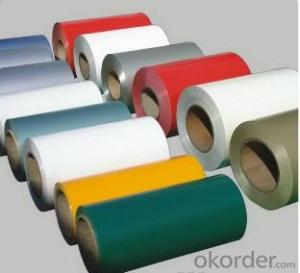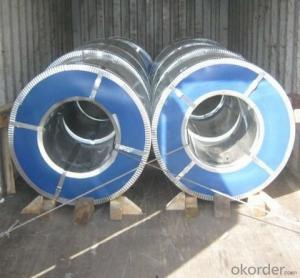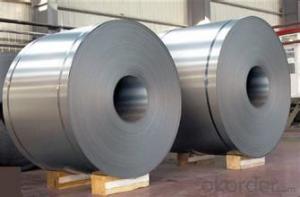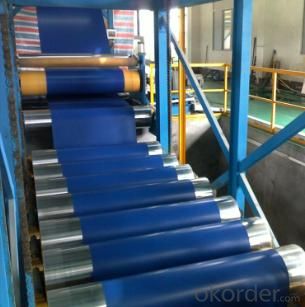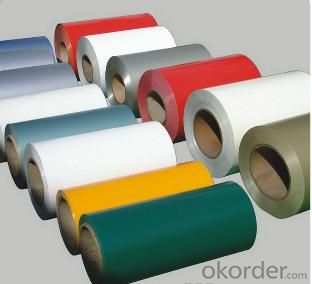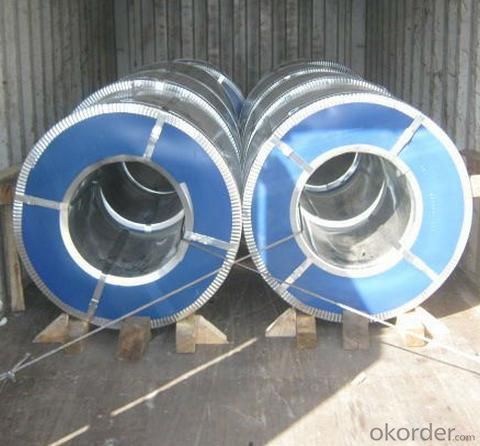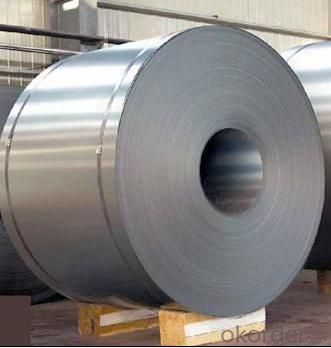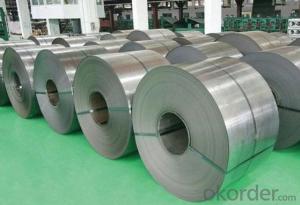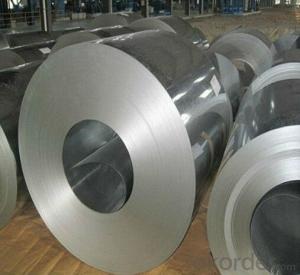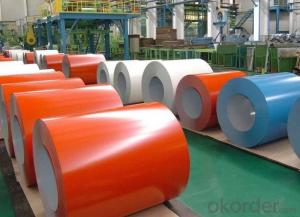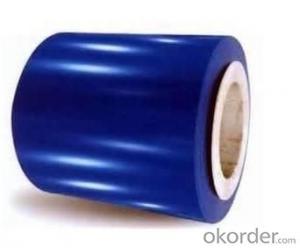Colored Coated Galvalume Steel Coils for Constructions
- Loading Port:
- Shanghai
- Payment Terms:
- TT OR LC
- Min Order Qty:
- 25 m.t.
- Supply Capability:
- 10000 m.t./month
OKorder Service Pledge
OKorder Financial Service
You Might Also Like
| Standard: | AISI,ASTM,GB,JIS | Grade: | CGCC CGCH | Thickness: | 0.17-0.6mm |
| Place of Origin: | China (Mainland) | Brand Name: | Model Number: | GL-001 | |
| Type: | Steel Coil | Technique: | Cold Rolled | Surface Treatment: | Coated |
| Application: | Container Plate | Special Use: | High-strength Steel Plate | Width: | 750-1250mm |
| Length: | C | certificate: | SGS,BV,ISO | usage: | building roofing material |
| coil weight: | 3-7 ton | coil ID: | 508mm | base metal: | hot rolled steel coil |
Packaging & Delivery
| Packaging Detail: | mills standard export seaworthy packing or according to the customers' requirements |
| Delivery Detail: | 30days |
Galvalume Steel Coils/Coil
Product advantages:
A.high strength
B.strong soundess
C.well rainproof performance
D.continuous rolling
E.good corrosion resistance
F.easy to install and remove
Quality guarantee:
our company attaches importance to quality management and assurance,it is equipped with sound testing means and has passed the certification of ISO9001 Quality Management System and SGS,BV verification
Deiverse products
With world high-quality galvanized,aluminum and zinc coated and cold-rolled steel coils as base materials.
- Q: How are steel coils used in the production of food processing equipment?
- Steel coils are used in the production of food processing equipment as they are shaped and formed into various components such as frames, supports, and panels. These coils provide strength, durability, and stability to the equipment, ensuring its reliability and longevity in the demanding food processing environment.
- Q: Hello people.Me and the life mate have been working on a fantasy book together and we are currently in the process of outlining the cultures. The culture of our antagonists' is a sort of woodland tribal/celtic[ish] deal and they are very nature oriented. Being a detail freak and wanting to have some real world credibility in the story, I am trying to decide how they produce steel. I want steel to be an important part of the culture, but a thing that is in limited supply. I also do not want there to be a large amount of resources committeded to mining or processing iron ore for steel. So does anyone have any real world ideas explaining how the people can produce steel without using underground mining operations, large processing facilities, and without raping the land?All help and ideas are appreciated
- Well, steel is just modified iron, so you're going to have to start with acquiring the iron first. For that, you're most likely going to be using some sort of underground mining somewhere - either they do that themselves, or they purchase the iron elsewhere. Assuming you're not dealing with meteoric iron (which is possible, but pretty uncommon), or iron sands (not likely in a woodland area), then unless you're dealing with a rocky outcropping with iron veins out in the open, I'm pretty sure there needs to be somebody doing some digging. That said, it doesn't need to be a full raping of the land scenario. A couple of minor mines, some small-scale smelting operations, and somebody knowing the secret of making steel, and it could give you small amounts of steel without making an ecological disaster.
- Q: How are steel coils different from steel sheets?
- Steel coils and steel sheets are both made from the same material, steel, but they differ in terms of shape and size. Steel coils are long, continuous rolls of steel that are typically wound up into a coil shape. They are generally used for industrial purposes and can be processed further to create various products like pipes, tubes, or automotive parts. On the other hand, steel sheets are flat pieces of steel that are available in various thicknesses. They are commonly used in construction, manufacturing, and fabrication processes where a flat surface is required, such as roofing, cladding, or panels.
- Q: Is there a type of spray paint that would work on Stainless steel?That would also be permenant or at least make it through a wash or two?
- I've also learned something today! Good luck and have fun!
- Q: What are the different methods of protecting steel coils from corrosion?
- There are several methods for protecting steel coils from corrosion. One common method is applying a protective coating, such as zinc or epoxy, which acts as a barrier between the steel surface and corrosive elements. Another approach is using corrosion inhibitors, which are chemicals that can be added to the storage environment or applied directly to the steel to reduce the rate of corrosion. Additionally, proper storage conditions, such as controlling humidity levels and preventing exposure to moisture and chemicals, can also help protect steel coils from corrosion.
- Q: which is the most tough and durable steel type ??
- Speaking of Building Construction, we use grade 450 and 450B not because of toughness, its because it best serves its purpose, reinforcing concrete structure should provide the enough ductility of structure to resist flexure/bending when loads are imposed on it.
- Q: What is the process for uncoiling and recoiling steel coils?
- To ensure the safe and efficient handling of steel coils, several steps are involved in the process of uncoiling and recoiling. Firstly, the steel coils are transported to the desired location using cranes or forklifts and carefully unloaded from the transportation vehicle. They are then placed in a designated area. Before uncoiling, it is crucial to inspect the steel coils for any damage or defects. This step ensures that only quality coils are further processed. Once inspected, the steel coils are secured to prevent any movement during the uncoiling process. Clamps or straps are used to hold the coils firmly in place. Uncoiling involves gradually unwinding the steel coil, which can be done manually or using specialized machinery such as uncoilers or decoilers. The coil is typically fed through a series of rollers that guide the unwinding process. In some cases, the steel coil may need to be straightened before further processing. Straightening machines apply pressure to remove any bends or twists in the steel. If necessary, the uncoiled steel coil may be cut into smaller sections or sheets using shearing machines or other cutting tools. The dimensions and size of the cuts depend on the specific project requirements. Once the desired processing steps are completed, the steel coil can be recoiled. This involves rewinding the steel into a new coil shape, which can be done manually or using recoilers. Recoilers wind the steel evenly and tightly to maintain its integrity. After recoiling, the steel coils are typically packaged and stored for further transportation or use. They may be wrapped in protective materials such as plastic or metal sheets to prevent corrosion or damage. In conclusion, the process of uncoiling and recoiling steel coils requires careful handling, inspection, and the use of specialized machinery. By following these steps, steel coils can be efficiently processed and prepared for various applications in industries such as construction, automotive, and manufacturing.
- Q: How are steel coils used in the manufacturing of seat belts?
- Steel coils are used in the manufacturing of seat belts as they provide strength and durability to the webbing material. These coils are typically inserted within the seat belt fabric to enhance the belt's ability to restrain occupants during a collision. The steel coils absorb and distribute the force exerted on the seat belt, ensuring it can withstand high impact forces and provide reliable protection to passengers in vehicles.
- Q: What is the thickness range of steel coils?
- The thickness range of steel coils can vary depending on the specific application, but it typically ranges from 0.005 inches to 0.5 inches.
- Q: How are steel coils used in the manufacturing of pressure vessels?
- Steel coils are used in the manufacturing of pressure vessels as they are processed into flat sheets and then formed into the desired shape. These coils provide strength and durability to the pressure vessel, ensuring it can withstand high pressures and temperatures.
Send your message to us
Colored Coated Galvalume Steel Coils for Constructions
- Loading Port:
- Shanghai
- Payment Terms:
- TT OR LC
- Min Order Qty:
- 25 m.t.
- Supply Capability:
- 10000 m.t./month
OKorder Service Pledge
OKorder Financial Service
Similar products
Hot products
Hot Searches
Related keywords
